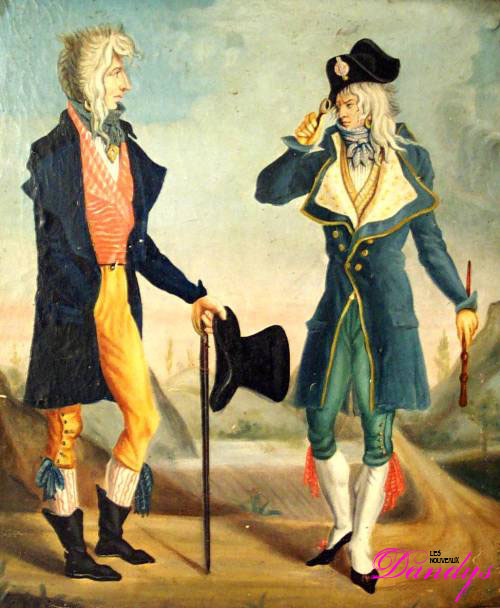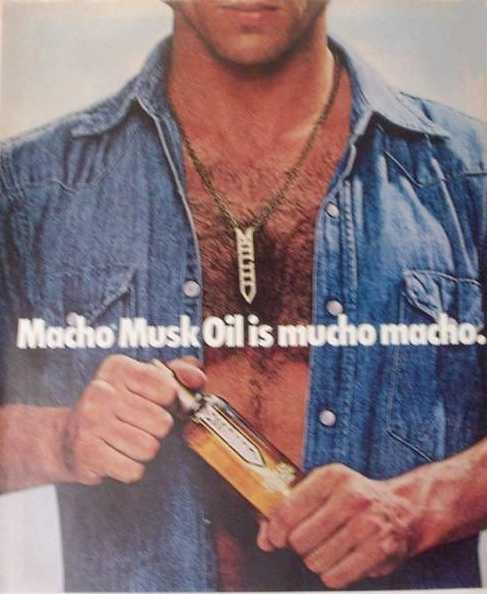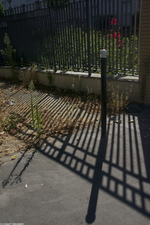Valentine's Day 2010: Exploring Musk Oils // Part 1 {Scented Thoughts} {Perfume List}
 18th century Muscadins - from "muschardin", a pastille perfumed with musk - are pre-dandy types, who were known for their predilection for perfume
18th century Muscadins - from "muschardin", a pastille perfumed with musk - are pre-dandy types, who were known for their predilection for perfume
Musk Oils in the 18th and 19th Centuries - Scientific Discoveries & Industrialization
The systematic quest for artificial musk started some 130 years earlier than is usually thought of when most introductions to synthetic musks start with a mention of 19th century Musk Baur. We entered the modern age of man-made musk odorants, which was going to be so prolific and fashionable at recurring periods of history, as early as in the mid-18th century - in 1758 to be specific, according to Kopp - when German chemist Andreas Sigismund Marggraff (1709-1782) managed to create a musk-smelling material by treating the oil distilled from natural, resinous, fossilized amber named "huile de succin", with nitric acid.
As reported by several works on chemistry, it had been known for a long time that the action of nitric acid on some hydrocarbons could produce a musky aroma, but this moment is recorded as a landmark - and Margraff himself baptized the new substance which offered a strong musky smell and was soluble in alcohol, "artificial musk" (Moschus artificialis; Künstlicher Moschus)...
This early artificial musk was nonetheless never produced at an industrial scale and remained more of a scientific turning-point than a commercial and cultural one.
It is not before 1888 that as a serendipitous result of the research of chemist Albert Bauer, who was looking for new explosives, that artificial musk perfumes would be launched thanks to what was discovered and commercialized as "Musk Baur" or again, "Artificial Musk." Soon, Baur went back to work as his odorant became an end-of-19th century chemical hit. Next, Musk Xylene, Musk Ketone, and Musk Ambrette were isolated. Although today, these so-called "nitro-musks" cannot be used anymore due to their toxicity, the nitro-musk odoriferous characteristics are still sought after by other means and with different aromachemicals.
Around the Belle Epoque, musks became much more widespread so much so that they became associated with the low-life type of the "cocotte" an euphemism for a prostitute. To this day, you can use the derived French word "cocotter" to mean that something smells overly strong, pungent, with a connotation of over-applied, cheap perfumes. You can directly invoke the pejorative memory of these sex-workers, perceived to be on the prowl, olfactorily speaking, by saying "Cela sent la cocotte ici", to mean that a place smells. (lit. It smells of a cocotte in here).
Musk Oils in the 1970s - The Cultural Revolution
If musk was frowned upon in well-heeled advice manuals of the turn of the 20th century, a complete reversal takes place by the 1970s when animalic-scented oils, and musk oils in particular, became a veritable sign of the times.
As Tom Reichert writes in The Erotic History of Advertising, Jovan Musk Oil was introduced in 1972 but was preceded and inspired by a phenomenon already taking place on the streets. Someone realized that a no-label musk oil sold in Greenwich Village was a magnet for long lines of customers among the youth of the time. Strong aromas that associated well with Marijuana-smoking like patchouli - for camouflaging purposes too - and sexual liberation, like musk oils and other animalic odors, became not only useful but desirable and therefore extremely popular. Overtly sexy was good. As a 1970s beauty magazine, Mademoiselle, published in 1973 states:
"These days, no woman's fragrance arsenal is complete unless it includes Musk Oil, Civet Oil and Ambergris Oil"
In Lewd Food, 1974, Robert Hendrickson also mentions the then "musk fad," going hand in hand with a civet one.
In 2010, we are left with the direct descendants of this musk-oil craze of the 1970s. The new discourse on sexual perfumery uses a new key-term, "pheromone", which is supposed to be odorless. But a number of iconic and lesser-known, more underground, musk oils are still to be found as scented "pheromones" and aphrodisiacs.
We will review several of them in our next post under the following headings: 1) Musk Oils: Straight-Up and Raw; 2) Luxury Perfumes Influenced by the Musk-Oil Trope.
Meanwhile you can read:
The White Musk Trend in Paris, Really?
Top White Musk Trails to Try Out
Musk Hall of Fame
Love Potions or My Top Super Sexy Scents for Valentine's Day and Beyond








